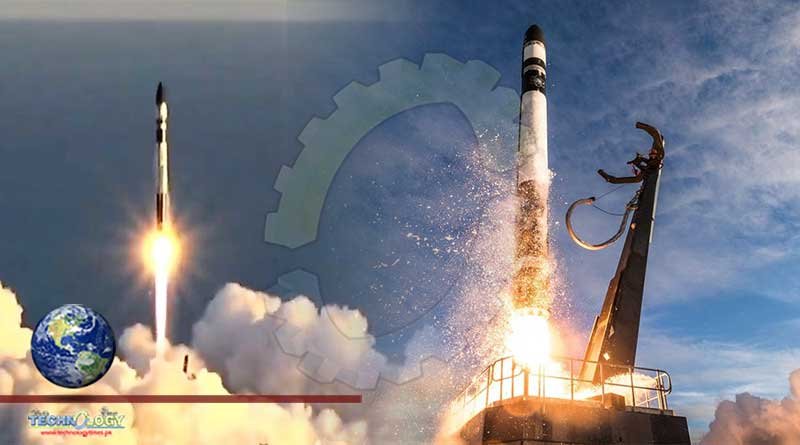Rocket Lab just launched seven small satellites to orbit, including one of its own spacecraft designed for future missions to Venus and moon.

Rocket Lab just launched seven small satellites to Earth orbit, including one of its own spacecraft designed to help pave the way for future missions to Venus and the moon.
A Rocket Lab Electron booster lifted off from the company’s Launch Complex 1 in New Zealand Monday (March 22) at 6:30 p.m. EDT (2230 GMT, or 11:30 a.m. March 23 local time), on a mission dubbed “They Go Up So Fast.”
“They really do go up so fast, with a beautiful liftoff of Electron from the pad at Launch Complex 1,” Rocket Lab propulsion engineering manager Scott Mohler said during today’s launch webcast. (Launch Complex 2, which Rocket Lab recently finished building in Virginia, is expected to host its first liftoff this year.)
“They Go Up So Fast” was the 19th Electron launch overall, and its seven payloads bring the total number of satellites lofted by the 58-foot-tall (18 meters) booster to 104, Rocket Lab representatives said.
The seven payloads that rode to orbit Monday are a diverse lot. There’s an Earth-observation microsatellite for the company BlackSky, for example, and two “Internet of Things” nanosatellites, one for Fleet Space and one for Myriota.
Also on board were three experimental satellites — one for the University of New South Wales Canberra Space, a weather-satellite technology demonstration from Utah-based Care Weather Technologies, and a tech-demo cubesat for the U.S. Army’s Space and Missile Defense Command (SMDC).
The SMDC cubesat, called Gunsmoke-J, “will test technologies that support development of new capabilities for the U.S Army,” Rocket Lab representatives wrote in the mission press kit, which you can find here.
The seventh payload was one of Rocket Lab’s own Photon satellites. The spacecraft, which the company calls “Pathstone,” is the second Photon to reach orbit, after the “First Light” vehicle, which launched in August 2020.
Like First Light, Pathstone will conduct a risk-reduction mission in Earth orbit.
“Photon Pathstone will demonstrate power management, thermal control and attitude control subsystems, as well as newly integrated technologies including deep-space radio capability, an upgraded RCS (reaction control system) for precision pointing in space and sun sensors and star trackers,” Rocket Lab representatives wrote in a mission description.
Such work will help Rocket Lab prepare for Photon missions to distant destinations. NASA has already booked a ride to the moon via Electron and Photon for its CAPSTONE (“Cislunar Autonomous Positioning System Technology Operations and Navigation Experiment”) cubesat, a mission that’s scheduled to launch later this year.
And Rocket Lab plans to start launching self-funded Venus missions in the next few years using the Electron-Photon duo.
The company is also working to make Electron’s first stage reusable, even recovering a booster on a prior mission. But Rocket Lab did not recover the booster today on “They Go Up So Fast.”
Originally published at Space
